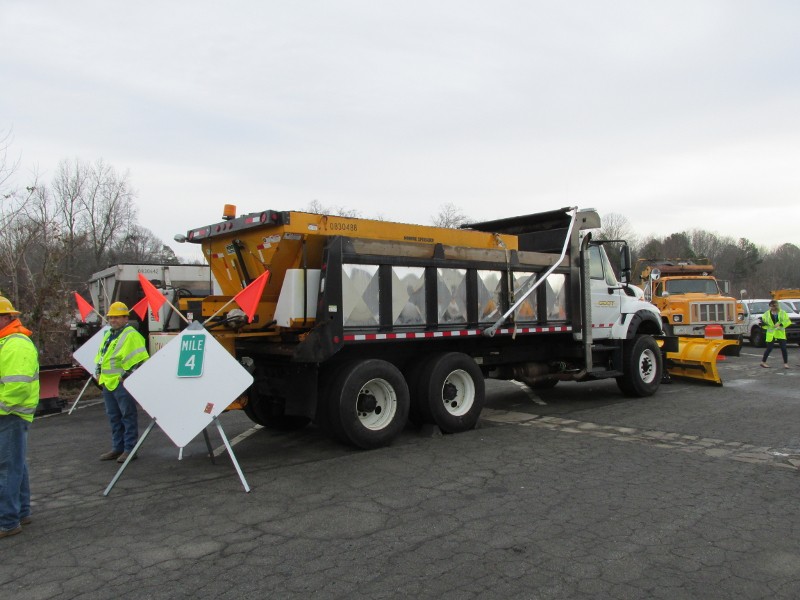GAINESVILLE – A week ago folks in northeast Georgia were “hunkering down”, getting ready for the arrival of the first winter storm on 2017. Grocery stores were abuzz with activity, but so was the Georgia Department of Transportation Maintenance Facility on Gillsville Highway.
Working 12-hour shifts GDOT crews began early Friday morning preparing the federal and state routes that crisscross District One for the predicted arrival of sleet, freezing rain and snow, as well as getting ready for the “black ice” that frequently follows the storm itself.
Fast forward to Wednesday, less than a week later, and that Maintenance Facility is busy once again; this time, however, the activity is centered on the arrival of members of the media (yours truly included) and the “Ready, Set, Snow” presentation planned since last month.
Meteorologically things have changed enormously. This time the forecast includes afternoon highs of 70-degrees in the days ahead.
Northeast Region Communications Coordinator Katie Strickland welcomed us and acted as our tour guide. Members of the District One team were on hand to answer questions as we were shown various pieces of equipment that had been used just days earlier.
The severity and extent of the predicted winter storm did not manifest itself to the degree expected, so snow plows and gravel trucks, used primarily during and after the storm, were not as critical for this event. What did operate at expected levels were those assets used to pretreat roadways, particularly equipment used to spread the salt and water mixture known as “brine”.
The brine formula used by GDOT to pretreat the roads before the arrival of the storm is roughly 23.5-percent rock salt, the remainder is water.
District Maintenance Engineer Dana Garrison said, “Brine is not a cure all; it will not keep our roads from freezing. What it does is buys us more time.”
Garrison added, “Water freezes at 32-degrees; brine (freezes) at around 28-degrees…so what that does is it gives us two or three hours to battle the elements. Just because we put out brine does not mean we are safe to drive.”
Garrison went on to explain that the brine solution is designed to dry quickly. “It’s not like it’s going to immediately start running, it’ll dry. After our (brine) truck gets a mile down the road you probably can’t even tell where we sprayed. The only way you can tell is if it rains – a white film will begin to cover the surface.”
Among equipment on display were:
-
What GDOT refers to as a “tow plow”.District One has two of them; they span two lanes and is used primarily on the Interstates and divided four-lane highways.One worker said about the tow plow, “It eliminates one truck and the need for one worker.”
-
The traditional gravel-spreading dump truck with a front mounted snow-plow.A GDOT driver explained that the bed of the dump truck held enough gravel and salt mixture to treat “eight to ten miles before needing to reload”, which translates into roughly thirty minutes between visits to the resupply area.
-
A flat bed tracker trailer holding a pair of 2600-gallon brine tanks, used in pretreatment and spot treatment operations.
-
Two pick-up trucks with front mounted plows used along the northernmost edge of District One to access the more-remote state highways too narrow or winding for the standard snow plow.
All equipment, one GDOT official explained, is dual purpose: used for winter storm operations and warm-weather construction and maintenance projects.
As to how GDOT makes their determinations on the scope, scale and timing of their operations, Garrison said they have to make educated guesses, at best.
Projects or forecast models provided by the National Weather Service are the chief criteria used in making decisions. “Even this go-around (last weekend’s winter storm) they had the model saying we were going to get this amount of snow in certain areas and it just didn’t develop.”
Until someone invents a 100-percent reliable crystal ball that will tell us what will happen without error, the people of GDOT District One say they plan to error to the side of caution and do their best to keep roads safe and passable.




http://accesswdun.com/article/2017/1/489579/gdot-showcases-their-readiness-to-keep-area-roads-open-and-safe
